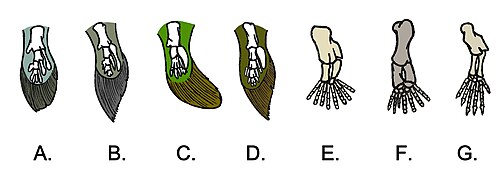Category:Polydactyly in early tetrapods
Jump to navigation
Jump to search

Early groups like Acanthostega had eight digits, while the more derived Ichthyostega had seven digits, the yet-more derived Tulerpeton had six toes.Crassigyrinus from the fossil-poor Romer's gap in early Carboniferous is usually thought to have had five digits to each foot. The amphibian Anthracosaurs had a five-toe pattern still found in their Amniote descendants, while further reduction had taken place on other Labyrinthodont lines, leaving the forefoot with four toes and the hind foot with five, a pattern still found in modern amphibians. [1]
References
[edit]- ↑ Benton, M. (2005): Vertebrate Palaeontology 3rd edition. Blackwell Publishing
number of digits in the very first stegocephalians during the evolution of terrestriality | |||||
| Upload media | |||||
| Subclass of |
| ||||
|---|---|---|---|---|---|
| |||||
Media in category "Polydactyly in early tetrapods"
The following 8 files are in this category, out of 8 total.
-
Acanthostega BW (flipped).jpg 737 × 233; 43 KB
-
Acanthostega BW.jpg 800 × 302; 16 KB
-
Acanthostega gunnari.jpg 1,536 × 1,024; 918 KB
-
Fins to hands.png 2,576 × 1,295; 562 KB
-
Fishapods and tetrapods.JPG 1,666 × 670; 156 KB
-
Fishapods tetrapods.JPG 2,992 × 1,048; 369 KB
-
Ichthyostega BW (flipped).jpg 727 × 244; 39 KB
-
Ichthyostega BW.jpg 800 × 305; 13 KB

